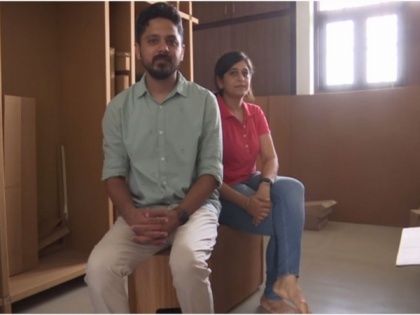Jaipur entrepreneurs make furniture using honeycomb paper
By ANI | Published: September 4, 2021 07:06 AM2021-09-04T07:06:10+5:302021-09-04T07:15:02+5:30
Jaipur-based entrepreneurs are making flexible and artistic furniture using biodegradable and water-resistant honeycomb paper.

Jaipur entrepreneurs make furniture using honeycomb paper
Jaipur-based entrepreneurs are making flexible and artistic furniture using biodegradable and water-resistant honeycomb paper.
Speaking to ANI, Shilpi Dua, an architect, said that they originally used this paper in building walls. "Honeycomb paper is used widely in the packaging industry. When our clients enquired if it could be used to make furniture, we thought why not, and that's how the concept was materialized. It's been two years since then and the response has been great," she stated.
Dua informed that the specialty of this furniture is that it can be folded and carried anywhere. "You can fold a table into a book and keep it on the shelf. It is a kind of art as when you open and close it, it makes different patterns. It is very lightweight and has a durability of 5-10 years," she added.
[{9889e618-1918-40fd-bc1a-7c3f1659e3de:intradmin/khnkj.JPG}]
She further said that it is made from recycled paper and has a good strength due to the honeycomb cells. "It will remain intact until it is not in contact with water for a long time. Otherwise, if there is a splash, you can simply wipe it off as it is water-resistant paper," she stated.
Abhimanyu Singh, Dua's partner in this business, toldthat they used this honeycomb paper to make Covid beds during the pandemic and donated it to Jaipur district administration for Covid-19 centres.
"These beds can be easily installed within two minutes. They weigh only 10 kg but can bear a weight up to 300 kg," he stated.
Singh and Dua, along with making furniture, also use honeycomb paper in construction. Singh claimed, "We are using this as an alternative to bricks and concrete. It reduces CO2 emission by 50 per cent and water consumption by 90 per cent."
( With inputs from ANI )
Disclaimer: This post has been auto-published from an agency feed without any modifications to the text and has not been reviewed by an editor
Open in app